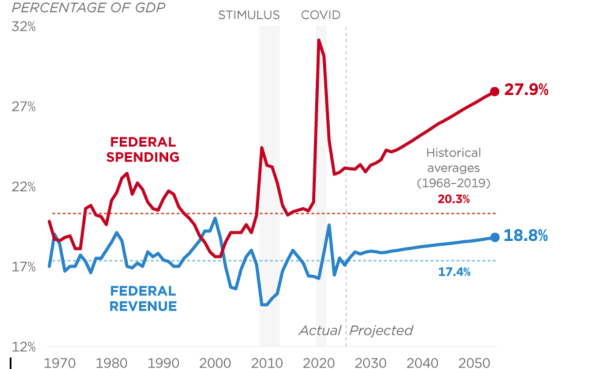Drew Charter Club helps advocate for a healthy lifestyle
Georgia has the 10th highest rate of childhood obesity in the country. According to senior Alexis Fisher, the Drew Charter Club was founded to help just that. The Drew Charter Club began last year as an extension of the Pre-Med Health club, but it expanded into a school-wide organization this semester. The club meets twice a month to visit the Drew Charter School in southeast Atlanta to teach third through fifth graders about the importance of eating right and building a healthy lifestyle. The young students also learn about the brain, the heart and the circulatory system.
Fisher, one of the founders of the Drew Charter Club, shared her experiences and the challenges she faced getting the club off the ground.
“I actually was part of the whole founding of the club.” said Fisher, “We had to present in front of the Service Learning Council to get a grant. I was there when when the whole club started and when we got the grant.”
Fisher along with co-leaders Nidhi Rao and Lexi Young agree that one of the biggest challenges they have faced so far is volunteer turnout.
“Last year, it was really hard to get the word out about the club, but this year it’s been really great extending this opportunity to the whole high school,” said Fisher. “We have so many more volunteers, and I think that was our main issue.”
Fisher hopes that after extending the club to the entire high school, more students will become interested in helping kids. Although Fisher has been a leader since the beginning of the club two years ago, Young and Rao became leaders just this year.
“I strongly value education, especially in neighboring communities,” said Young. “It’s very important that we see service as not a distinctly international experience, but something we could do in our own backyards.”
Young shared that she believes it is important for Westminster students to participate in this program. Building relationships with people of different ages is a meaningful experience for both Westminster and Drew Charter students. She also believes Westminster students involved in this club will inspire kids to do give back to their communities as well.
Similarly, Rao believes the Drew Charter Club is not only a good way to get involved in the community, but also a way to expand an interest in health and science beyond reading and writing in the classroom.
“I have always been interested in health as an overall topic, and I thought it was cool that we got to interact with kids,” said Rao. “[The Drew Charter Club is] also important because Georgia has one of the highest obesity rates. Obviously, we can’t meet with such a large group of kids, but every little bit counts.”
At the Drew Charter Club, a typical meeting includes a quick introduction game, a class wide topic-related activity, snack time, and a lesson on a new health topic. The overall goal of the club is to promote a healthier lifestyle.
One of the favorite activities of the club takes place during the germ unit of the Drew Charter Club’s lesson plan. The students are given glitter and lotion, then are instructed to mix the two together on their hands to represent germs and their ability to adhere to the skin. A few minutes later, the children would go around the room, touching things and shaking hands with one another to demonstrate how quickly germs spread from person to person and from thing to thing. The club members then would show the kids that it took more than just cold or warm water to get rid of the glittery “germs.” Instead, it takes soap and hot water to remove the germs from their hands.
The club organizes snacks each session that relate to the lesson plan. These could involve making fruit monsters to celebrate Halloween or serving hummus as a heart healthy food during the heart rate unit. When asked about her favorite activity from the Drew Charter club, Young described her favorite snack.
“The lesson that day was healthy eating and trying to eat from every part of the food pyramid,” said Young. “We built a meal that that included one part from each section of the pyramid. We got to build chicken wraps, and we had fruit. We also used honey mustard for the oil and fat part. I thought that was really fun because it was buffet style, and [the kids] got to see that it is possible to have every part of the food pyramid on their plates.”
Teaching elementary students does have its challenges.
“Usually we have a few kids who are a little rambunctious, who don’t like to follow rules or sit down for activities, so that’s always a challenge,” said Rao. “We figured out that the best way to overcome that is by doing an activity first so they can run and get their energy out. Then we do a video and have a snack. This doesn’t always work because some kids seem to have an endless supply of energy, but that’s just something that we have to learn to deal with.”
Fisher, Rao, and Young believe that any high schooler that is interested in health, making a difference in the community, or just spending time with kids would be a good fit for this club. Young was wowed by how engrossed the Drew Charter students became during each meeting.
“The biggest thing I’ve learned is that the kids know a lot more than I thought they did,” said Young. “A lot of times I’d be explaining things to them and they would just get it automatically. It’s pretty beautiful that kids at that age are just like sponges and they can just soak everything up. They are very intelligent, so just working with them, furthering their education, and maximizing the potential they already have was actually surprising at first, but now it is just routine to see them push their own boundaries.”
People interested in learning more about the club can visit the club’s blog, healthoutreachclub.wordpress.com, and those interested in joining may email one of the leaders. Members of Drew Charter Club believe that working with the Drew Charter students is a meaningful experience for both Westminster and Drew Charter students.
When asked why she joined the club, Fisher said, “I know that we can’t completely get rid of the problem of childhood obesity, but at least we can put a dent in it.”




